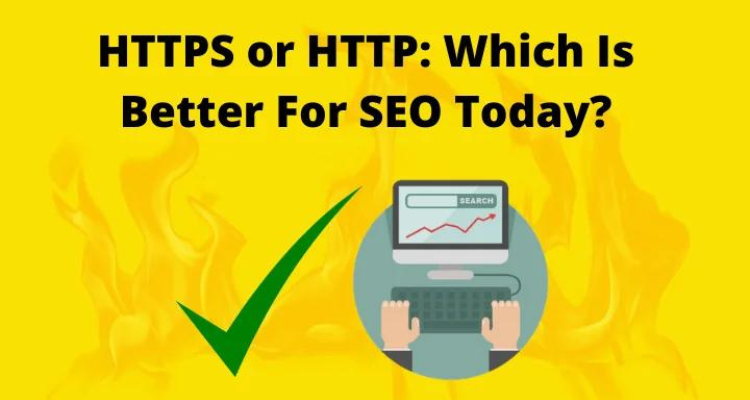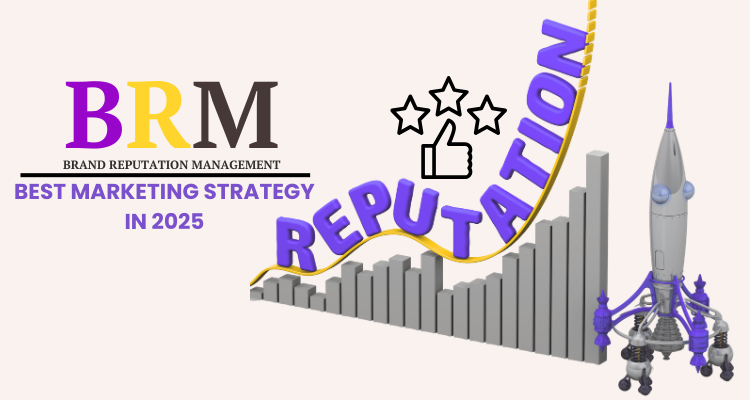Mass digitalization has encouraged businesses of all sizes to move online, and real estate is no exception. The real estate business is very lucrative till you know how to leverage the resources optimally. And by resources, we predominantly mean the digital platform.
Statistics reveal that 47% of homebuyers begin their property search online.

Thus, to be a successful real estate agent or company in the highly competitive digital marketplace, you must know the current trends and strategies that will consequently boost your growth.
Therefore, having a website does not reap optimal benefits until you have a competent digital expert team providing robust SEO services! Search engine optimization, or SEO, is the foundation of marking a potential online presence.
No matter what the size of your business is, you must have a good search result ranking to attract potential leads. Until you have increased visibility, you cannot make it through the rat race!
In this blog, we will highlight the SEO strategies essential to growing and expanding your real estate business. If you still haven’t opted for real estate SEO, it will be a helpful discussion to provide insights into the matter.
So, let’s begin the SEO journey!
Why is Real Estate SEO Necessary?
Now, before digging into the SEO strategies, let us begin with the basics- why is real estate SEO necessary? As you know, SEO is the process of optimizing your website and other online content to rank higher in the search engine results page (SERP) to boost traffic drive and enhance online visibility.
It is a long-term strategy which does not offer you results overnight! However, over time, you will experience positive outcomes when you begin appearing at the top search results! SEO for real estate is one of the most reliable ways to accomplish your business goals. The results are long-lasting, but you must keep updated with the changing trends. Or else no sooner will you notice losing your spot!
We now know what SEO is. But why does a real estate business need it? Here are the reasons:
- Boost Organic Traffic- SEO’s fundamental benefit is increasing organic traffic coming to your site. By optimizing your web content, you improve your search engine ranking, which directly influences online visibility. The higher your rank, the better the click-through rate. Therefore, to take your real estate business to the next level, SEO is necessary to improve traffic drive.
- Generate Leads- What happens when you receive more organic traffic? It boosts your chances of attracting the right audiences. This means that you generate more potential leads encouraging a higher conversion rate. Real estate SEO strategy focuses on getting qualified leads from other resourceful sources, maximizing conversions.
- Enhance Brand Awareness- Can there be any better way for brand exposure? In this era, the answer is no! We rely on the digital platform to discover new products, services, and brands. It is a powerful tool for promoting businesses. Undoubtedly, SEO plays a critical role in exposing your brand or business globally. Nobody will know about your real estate business until you are found online!
- Increase Revenue- When you receive more qualified leads, the chances of conversion become higher. More conversion means more revenue. Targeting niche audiences through SEO is one of the effective measures to earn better quality leads or audiences willing to become clients. You do not have to worry much about convincing the audiences who are already interested in your product(s) or service(s). SEO assures you a higher return on investment (ROI).
- Manage Brand Reputation- An impressive benefit of real estate SEO is that you can manage your online brand reputation by replying to reviews or answering questions. A positive review can have an influential impact on your brand’s reputation. It encourages others to make a purchase. Similarly, you can promptly reply to negative feedback and promote better consumer support. Either way, managing online reputation becomes much easier with effective SEO.
Hence, there is no doubt that SEO is the modern-day online marketing tool that assures promising results over time. It is an unavoidable element for brand promotion and boosting sales.
Nonetheless, with too much information out there, you really must know which ones will fit best to meet the needs of your target audiences. Clearing up the dilemma, we have listed the top digital marketing strategies that will guide you through the process. Keep reading to learn about them.
Real Estate SEO Strategies
When the real estate marketplace is constantly changing, it is necessary you build a functional SEO strategy that will tailor your content to complement the evolving trends. In this way, you can make your marketing and sales funnel impactful. SEO helps in creating new entry points for leads to enter the funnel. This, in turn, guides the users directly to the conversion points on your site.
Therefore, implementing the right SEO strategies is a prerequisite to boosting success in your real estate business.

Following are the unmissable strategies for SEO for real estate business:
- Perform Website Audit
Every SEO strategy begins with a thorough website audit. Why is it necessary? A doctor cannot recommend treatment until he performs a check-up to probe into the problems and symptoms. A website audit has a similar function. It helps in detecting the strengths and weaknesses of your website. In other words, an audit evaluates the performance of your site, increasing the scope of improvements.
You can always refine your strategies if they are not offering the desired results. Website design, page speed, on-page SEO, technical SEO, content quality, user experience and accessibility are the primary metrics assessed through a website audit. Thus, it evaluates the overall performance of your website based on which you can optimize your strategies.
- Competitor Analysis
Knowing your competitors is necessary to understand who your challenges are. How can you construct a plan until you know your competition? Maybe you know the names of your industry competitors, but that is not enough. Comprehending their SEO strategy is the best way to understand what is working for them. Competition can vary from keyword to keyword!
Therefore, to acquire a complete insight into the scenario, conducting a competitor analysis is mandatory. You can learn from their gains and misses! The structure of their or even the type of content they are publishing- everything matters when you are building your action plan!
- Keyword Research
When aiming to reach the top of the search results, you must use valuable keywords in your website and other web content. What do we mean by valuable keywords? These are the keywords that are most searched by users on search engines. So, you must target those real estate keywords possessing high search volume and competition.
You can find such valuable keywords through keyword research using various platforms like Google Search Console, Google Trends, Keyword Tool, and others. You can even check the keywords you are already ranking for. Uncovering the top keywords can change the game entirely! Believe us!
- Create High-Quality Content
The primary element in SEO is content. It is the determining factor for the search engine ranking of your real estate website. Creating high-quality content is the foremost priority of SEO. Today, content marketing strategy is significantly influential due to the massive exposure to diverse digital platforms. Users find more information on the Internet than anywhere else! Hence, ignoring the importance of high-quality content will be your greatest mistake!
We have been talking about high-quality content; do you know what that implies? Your content must be relevant, informative, well-formatted, and readable, providing a good user experience. Your audiences must find it useful and valuable. The power of content is immense until you experience it!
- Use Real Estate Agents Schema Markup
Schema markup is also known as structured data. You can use this code in your website’s HTML to enable search engines to easily comprehend the information on your website. It helps the users to find the accurate information they are looking for. In other words, whenever you add real estate agents schema markup, your website appears instantly for a relevant search.
For real estate businesses, there are two types of schema markup- real estate listing and real estate agent. Whichever schema markup you use, your website will significantly benefit from it. You may even be able to replace a featured snippet. How does that sound?
- Local SEO
Never should you forget that to establish globally, you must first establish locally. You must build local market dominance before you target reaching audiences at other locations. And don’t you think it is easy! The competition is tough, especially for startups and small-scale real estate businesses. So, a Google My Business (GMB) listing is a must-have to appear in the local search results. About 98% of consumers search online for local businesses (2023). We are sure the numbers will increase this year!
The GMB listing includes your company’s name, category, description, location, and contact details. A fully optimized GMB profile will help you rank high in the local searches. Apart from that, Google Maps optimization is another effective approach that enables potential leads to locate your business conveniently. It establishes trust and credibility as they find your business authentic. An accessible physical presence vouches for legitimacy.
- Generate Backlinks
Getting referrals from other trusted sites works wonders in search engine ranking and increasing organic traffic. It is predominantly done through link-building strategies where you get other websites to link to your web pages. What happens through the link-building process? You receive high-quality inbound links (backlinks), which mark the authority of your web pages in search engines. Therefore, you establish trust and credibility as audiences find your business reputed and reliable.
These backlinks act as a “vote of confidence”- an essential element to encourage digital dominance. They validate the existence and authority of your business. So, how do you generate backlinks? There are multiple ways to get resourceful backlinks like guest blogging, publishing Skyscraper content, resource pages, broken links, etc.
- Optimize Website for Mobile Search
Mobile web traffic accounts for nearly 60% of the total web traffic. It is not surprising that the numbers will rise in the following years. And more than 57% of the local searches come from mobile users. Therefore, your website must be mobile-friendly to reach maximum target audiences. It is highly essential because Google automatically crawls and indexes mobile-friendly websites first using mobile bots. These bots handle your website as a mobile device. Hence, you must focus on optimizing your website for mobile devices and tablets.
Developing a responsive layout, increasing page speed, compressing images, optimizing pop-ups, using readable font, and changing button size and placement are the significant strategies employed to improve mobile-friendliness. So, focus on mobile search to not miss out on a large percentage of your target audiences!
- Test and Tweak
There are no set rules for a successful real estate SEO strategy! What works for others may not work for you! The only way to find the right recipe for a delicious meal is to experiment with the ingredients! And that is exactly what you must do- test and tweak your strategies. The secret to improving the conversion rate is continuous improvisation of the techniques and testing their performance. In this way, you will stay updated with the changing trends and receive better results.
The goal is to attract more organic traffic and enhance user experience. It aids higher chances of conversions and sales. Therefore, never stop experimenting!
- Track Performance
After implementing the strategies, how do you know the results? You need SEO analysis or monitoring of the performance of your SEO strategies. It provides a better understanding of how well your website has been optimized and what you should do to improve its effectiveness. Using various key performance indicators (KPIs), you can track your website’s performance. The KPIs are the metrics providing insights into the results.
KPIs basically comprise search engine ranking, organic traffic, user experience, session duration, click-through rate, bounce rate, and conversion rate. These are the fundamental factors that determine whether you have accomplished your SEO goal(s).
Well, now you know what makes up a good SEO strategy for real estate businesses. Unfortunately, some business owners may still be dubious about whether it is worth all the investment- time and money! We will come to that in the next section.
The ROI of Real Estate SEO
1,389% is the average ROI of real estate SEO for 10 months. Does it sound appealing? The longer you run your SEO campaign, the higher the ROI! Another interesting fact is that SEO drives 300% more traffic than any other social media campaign. The long-term SEO game assures increased profits over time, and you will genuinely want to take the long shot!
Conclusion
Opting for best SEO packages from a reputed service provider will be the best thing you can do to boost your business growth. There is no better way to become digitally recognized than to employ dedicated SEO strategies for real estate businesses. You get traffic, higher ranking, more leads, increased conversions, better brand exposure, and boosted revenue. What more do you ask for? So, are you ready to make a glorious start to 2024?
 +1-(646) 362-1414
+1-(646) 362-1414 +91-88-266-83820
+91-88-266-83820







 A good search engine optimization (SEO) strategy can indeed change the online game drastically. By game, we mean online visibility and traffic drive to any webpage or website. However, what if you do not receive the expected results? In other words, your website rank is nowhere within the top three options on the search engine results page (SERP).
A good search engine optimization (SEO) strategy can indeed change the online game drastically. By game, we mean online visibility and traffic drive to any webpage or website. However, what if you do not receive the expected results? In other words, your website rank is nowhere within the top three options on the search engine results page (SERP).









